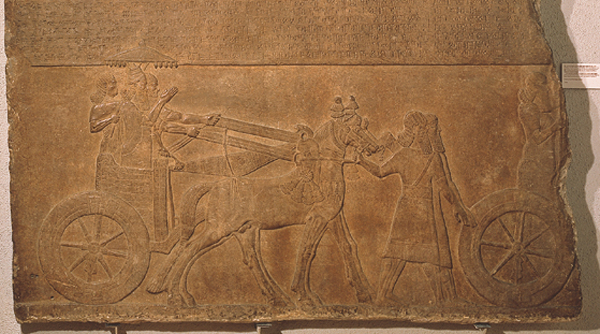Image Details

British Museum
The relief shows Tiglath-pileser riding in triumph in his chariot. The king wears a royal turban and fringed robe and holds a lotus blossom in his left hand. Dating to about 730 B.C.E., the relief was discovered by Layard in secondary use in Esarhaddon’s palace at Nimrud.
Both Assyrian records and the Bible describe Tiglath-pileser’s incursions in the West. According to 2 Kings 15:29, for example, “In the days of King Pekah of Israel, King Tiglath-pileser of Assyria came and captured Ijon, Abel-beth-maacah, Janoah, Kedesh, Hazor, Gilead and Galilee.” A few verses earlier, we read, however, that “King Pul of Assyria came against the land; Menahem [king of Israel] gave Pul a thousand talents of silver, so that he might help him confirm his hold on the royal power So the king of Assyria turned back, and did not stay there in the land” (2 Kings 15:19–20).
